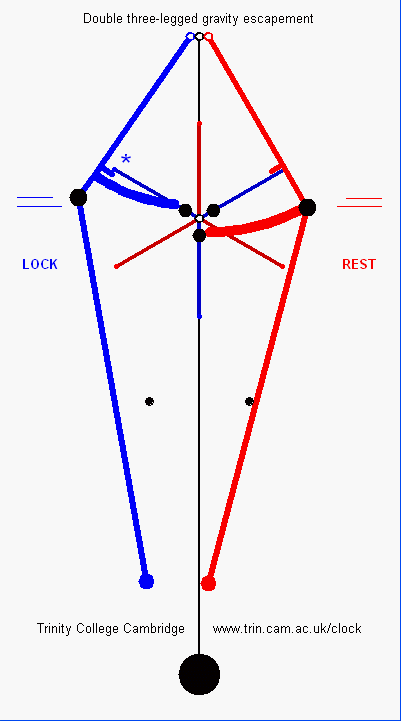
- 23 Feb 2019 [18:53]
- ADJUST: -4000ms/day to 16000 by Chloe Caron
- 23 Feb 2019 [14:26]
- This [link] seems to show that the driven scale factor for going vs amplitde is about -150 ms/day per mrad
- 23 Feb 2019 [13:20]
- ADJUST: reset to 20000 - this will need further fine tuning later once the amplitude settles. [link]
- 23 Feb 2019 [11:40]
- In doing all this the Wyler orange level was disconnected, removed and replaced. Also the mirror for the twist measurement had to be repositioned.
- 23 Feb 2019 [11:40]
- 4. removed large metal frame from barometric compensator. Now both aneroid stacks move independently. It will be good to see if the compensator performance is improved.
- 23 Feb 2019 [11:40]
- 3. lifted pendulum and replaced suspension with the original. Joined by Chloe Caron and Kazuo Newcombe for this - very good to have help! The original suspension is defiitely not square, but the pendulum is now ticking much more evenly.
- 23 Feb 2019 [11:40]
- 2. reconnected heater and made more robust connection so that it won't come unplugged again ... hopefully!
- 23 Feb 2019 [11:40]
- 1. removed fan and tube - it;s ugly and not really very effective
- 23 Feb 2019 [11:39]
- Clock restart, but with a few things done with the opportunity given that the clock has stopped:
- 23 Feb 2019 [07:04]
- Clock stopped. Not exactly sure why, but the evidence suggests that the heater fell down and onto the bob causing the pendulum to hit the IR sensor as evidenced by large twist and the pendulum amplitude dropping rapidly. [link] . Here [link] it's clear that the heater had fallen down.
Download data





